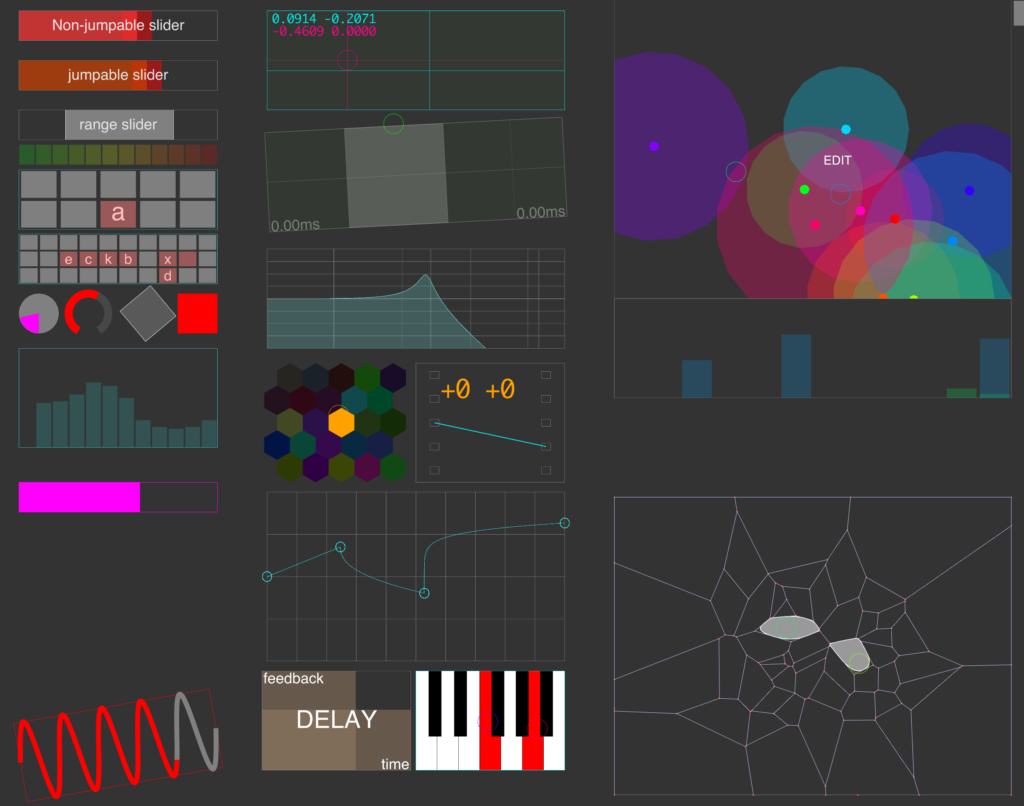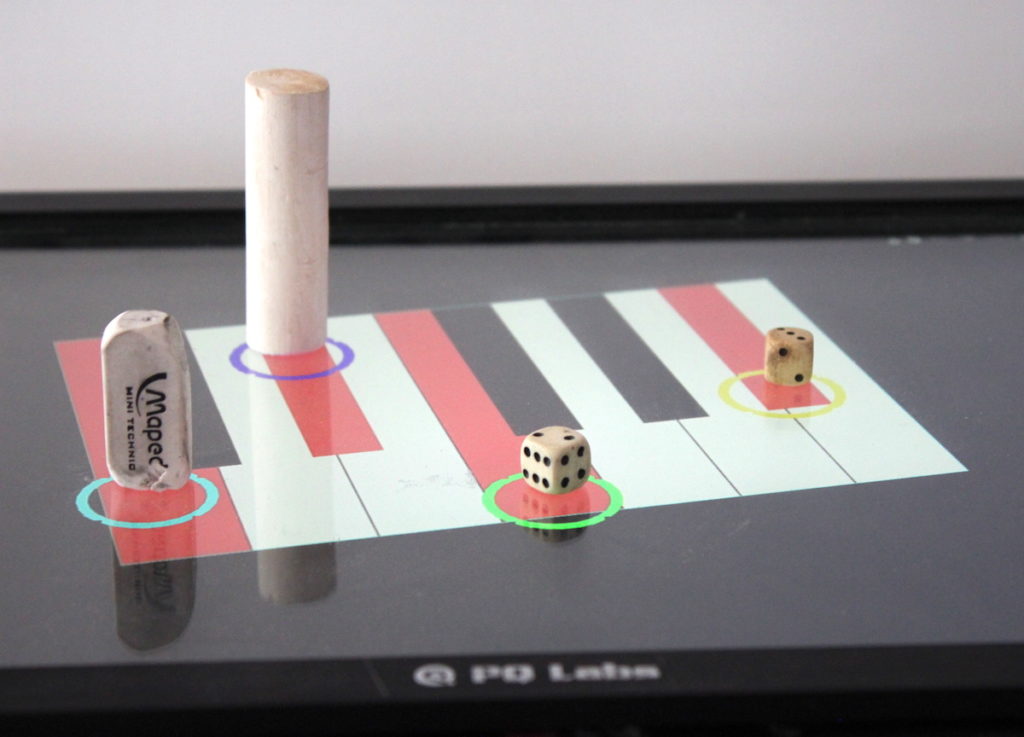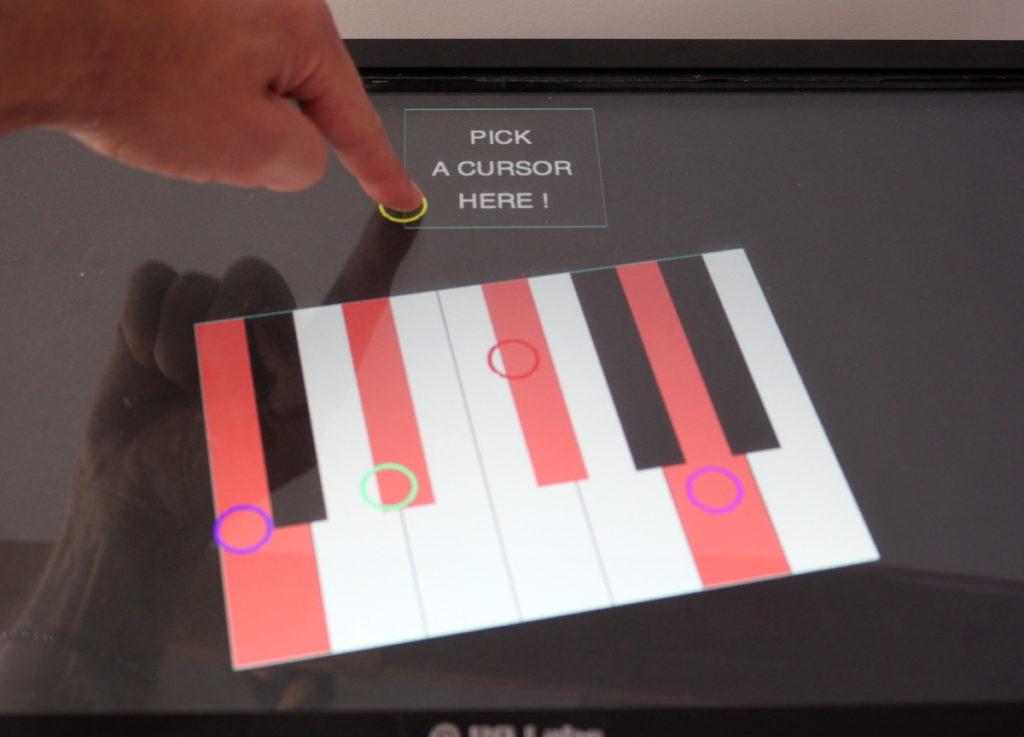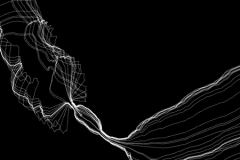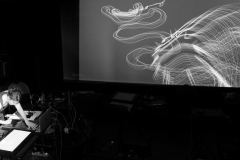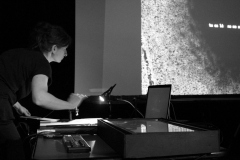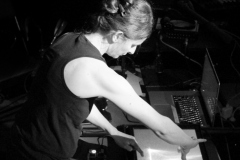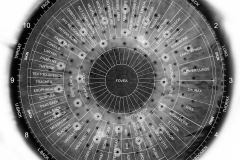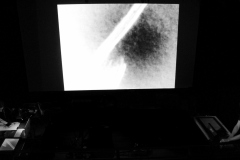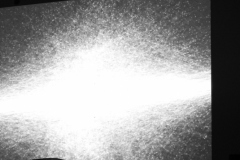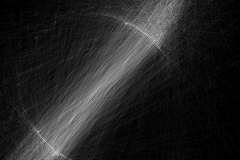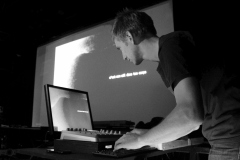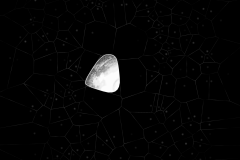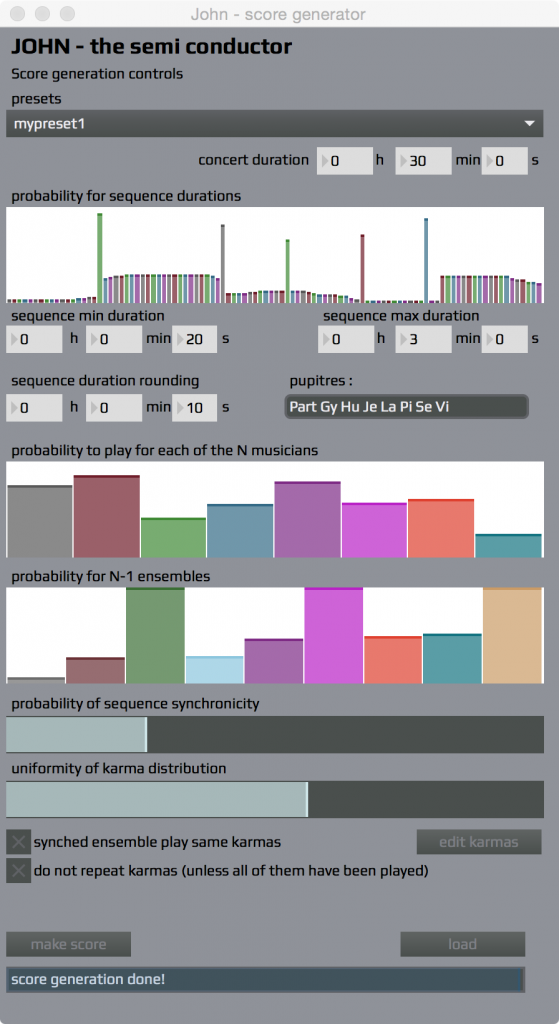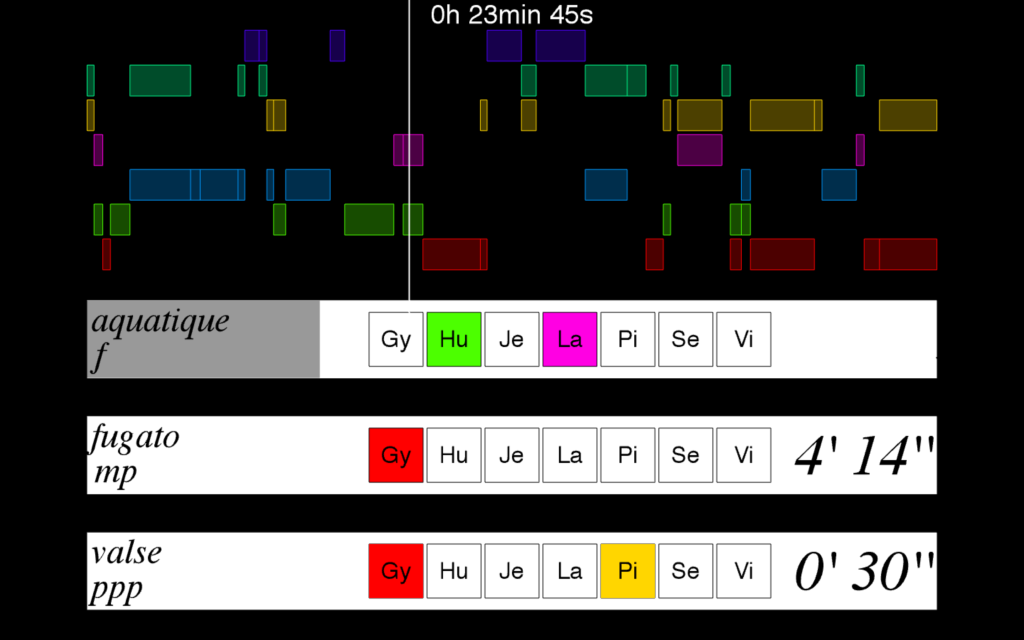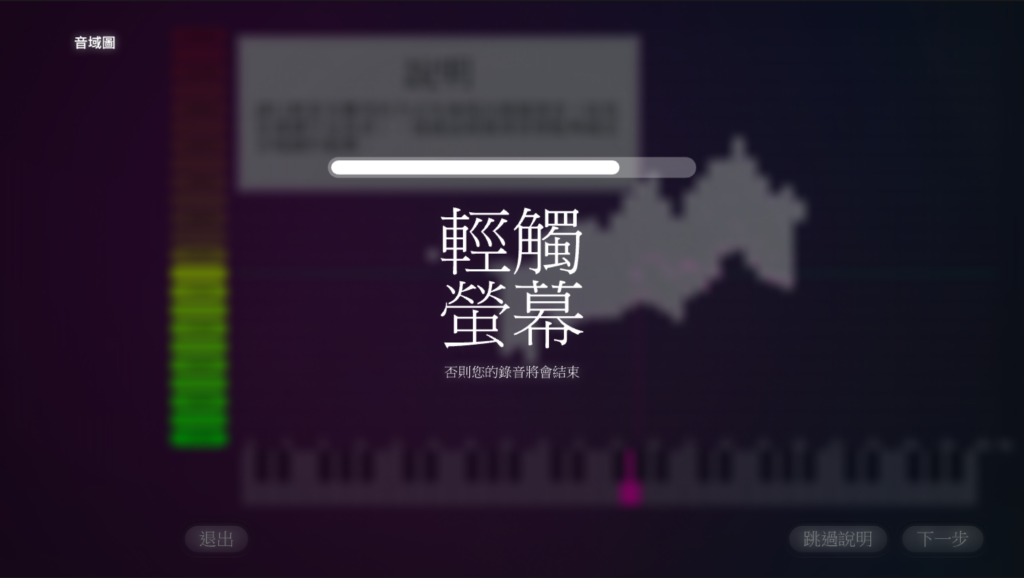Image ©Anne Maregiano.
The Interactive Sonotactile Table is a device invented for the Maison des Aveugles (“House of the Blinds”) in Lyon by french composer Pascale Criton in collaboration with Hugues Genevois from the Luthery-Acoustics-Music team of the Jean Le Rond d’Alembert Institute and Gérard Uzan, researcher in accessibility. The table was designed by Pierrick Faure (Captain Ludd) in collaboration with Christophe Lebreton (GRAME)
I coded the embedded Arduino boards as well as the Max patch for the gesture/sound interactive design.
The Table Sonotactile Interactive is part of a larger project : La Carte Sonore by Anne Maregiano at the Villa Saint Raphaël: https://www.mda-lacartesonore.com.



